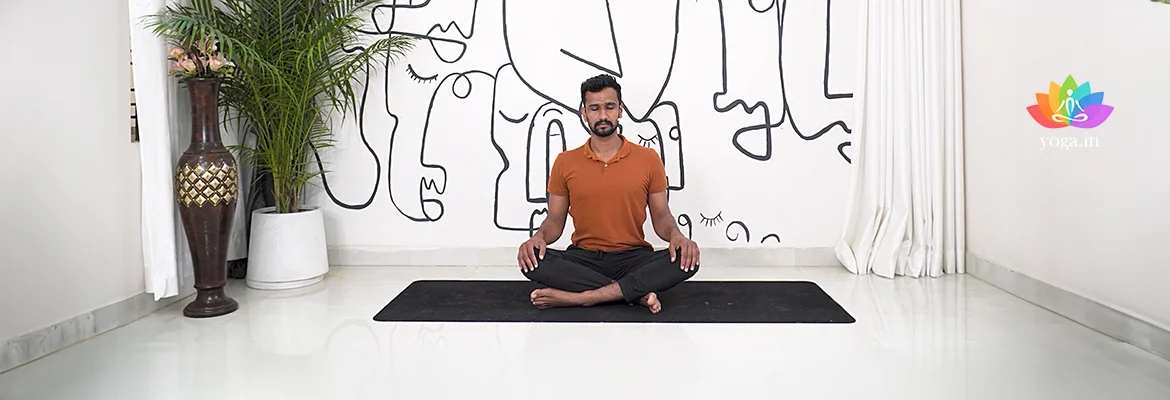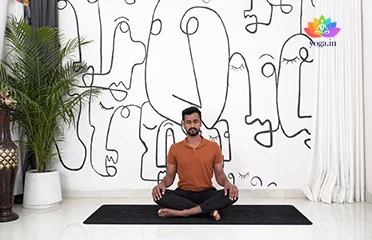Sit in Dandasana with legs stretched straight out in front of the body.
Introduction to the Asana
The Sanskrit name is derived from Sukh (सुख) means anand/ aaram and asana (आसन) meaning posture or seat.
Step to get in the pose
-
-
Bend the left leg and place the left foot beneath the right thigh.
-
Similarly, bend the right leg and place the right foot beneath the left thigh.
-
Rest the outer edge of your feet on the floor.
-
Adjust the body and legs to get comfortable in the pose.
-
The head, neck, and spine must be erect (without strain).
-
Place the palms on the knees or thighs.
-
Keep the shoulder relaxed and elbows a bit bent.
-
Close your eyes and relax the whole body, take slow and deep breaths.
-
Feel every breath moving in and out of the body.
-
Practice for a minute or less if you feel discomfort.
-
Practice twice by interchanging the position of the legs.
Common mistakes and pitfalls
-
Straining yourself by Keeping your legs in an uncomfortable position.
-
Hunching your shoulders.
-
Rounding your back.
-
Tension in the face.
Benefits
-
Aligns and lengthens the spine.
-
Kicks out anxiety, stress, and mental tiredness.
-
Opens your hips.
-
Flexibility of your lower extremities.
-
Better blood circulation.
-
Improves focus and concentration.
Contraindication
-
Avoid in case of a knee, hip, or foot injury.
-
Avoid in case of sciatica.
-
Avoid in case of slipped disc.
-
For senior citizens sitting on the floor may not be comfortable.




